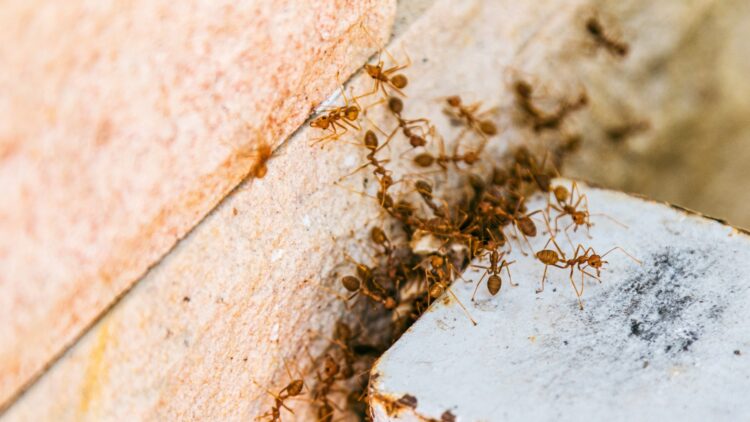Asian needle ants may sound exotic, but they’re becoming an increasingly common – and dangerous – presence across large parts of the United States. As summer begins and more people head outdoors, the risk of encountering these invasive ants is growing, particularly in July and August. It is rare in U.S. biodiversity to have such an insect, but due to invasive species it is becoming more and more complex to control. Also, an invasive insect pest can be very dangerous and can even disrupt public health, not to mention the detrimental damage to the ecology. Read on to learn more.
What are Asian needle ants?
Native to China, Japan, and the two Koreas, these ants are dark brown and often go unnoticed because they blend in easily with soil, mulch and rotting wood. Unlike other ant species, they don’t lay down scent trails, which makes them harder to detect and track.
Where are the ants found in the U.S.?
Asian needle ants were first discovered in Georgia in 1932. Since then, they have ventured as far north as Connecticut and as far south as Florida. You’re most likely to find them in the east of the country, in humid, forested areas dominated by hardwood trees.
They thrive in leaf litter, rotting logs, firewood, and mulch, often making their homes in residential yards. You’ll find them nesting under wood piles, bricks, pavers, and even in potted plants and lawns.
“People are most often stung when they’re working in their garden,” notes Theresa Dellinger of Virginia Tech’s insect identification lab.
Environmental Impacts
Only within the last 20 years have researchers begun to understand the potential long-term impacts of Asian needle ant invasion. Native ant abundance and diversity are reduced in areas where Asian needle ant is established. Of great concern is the apparent ability of Asian needle ants to displace ant species that are critical seed dispersers. Many herbaceous plants’ seeds have a nutritious structure attached called an eliasome, which attracts certain ants. These ant species, many in the
genus Aphaenogaster in the U.S. East, carry the seeds away from the mother plant, ensuring proper dispersal of the plant species. Researchers have demonstrated substantial decreases in seed dispersal where Asian needle ants have invaded forest areas. Thus, this invasive species could have dramatic, long-term negative effects on forest understory.
Why their sting is dangerous
The sting of an Asian needle ant is more unusual than most. Benoit Guénard, a professor of ecology and entomology at the University of Hong Kong, describes it as such: “Imagine somebody inserting a needle directly into your flesh. It’s a very sharp, acute pain – quite local at first. But then, five minutes later, the pain comes back as if you’ve been stung again in the same place.”
While most stings cause localized pain, some can trigger severe allergic reactions. Around 1% of people stung may go into anaphylactic shock, a potentially fatal condition. In 2024, at least three life-threatening cases of anaphylactic reactions were reported in Georgia alone. So it’s probably best to play it safe and wear gloves when you’re gardening this summer.
Human Impacts
Perhaps the most troubling characteristic of Asian needle ants is their sting. While they are not terribly aggressive, like the more familiar red imported fire ants, their stings are painful, often affecting different people in different ways. In fact, the sting can result in life-threatening anaphylaxis, an acute allergic response . Stings are often reported to result in intense pain at the site of the sting that comes and goes over the course of several hours. Some people experience pain away from the sting site. Redness of the skin and mild to severe urticaria (hives) are reported as symptoms. In a study in the native range of the Asian needle ant, 2.1 percent of people stung exhibited anaphylaxis. While anaphylaxis has been reported in the United States, the percentage of people who have developed hypersensitivity (increased allergic response that can lead to anaphylaxis) to Asian needle ant stings is unknown. People who are hypersensitive to other stinging
insects may be at increased risk of anaphylaxis from Asian needle ant stings.

